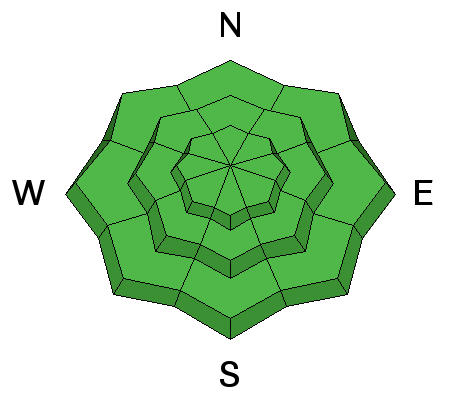25th Annual Black Diamond Fall Fundraising Party
Thursday, September 13; 6:00-10:00 PM; Black Diamond Parking Lot

25th Annual Black Diamond Fall Fundraising Party
Thursday, September 13; 6:00-10:00 PM; Black Diamond Parking Lot
| Advisory: Ogden Area Mountains | Issued by Paige Pagnucco for Friday - January 5, 2018 - 6:32am |
|---|
 |
special announcement Spend some time improving your rescue skills or learning about avalanches in these two, upcoming Ogden area classes: January 12, 2018 Companion Rescue Fundamentals Snowbasin January 18, 2018 Backcountry 101 Avalanche Class Snowbasin Episode 2 of the UAC podcast has been released. Drew Hardesty talks Avalanche Weather with Professor Powder himself, atmospheric sciences professor and author of Secrets of the Greatest Snow on Earth, Jim Steenburgh. Check it out on ITunes, Stitcher, the UAC blog, or wherever you get your podcasts. The UAC Marketplace is online. The holiday auction is closed, but our online marketplace still has deals on skis, packs, airbag packs, beacons, snowshoes, soft goods and much more. |
 |
current conditions Mountain temperatures are currently in the low to mid 30's F with winds out of the south at 10-15 mph. Riding conditions in the Ogden zone are a mixed bag of wind buff, soft snow, sun crusts and whatever else you can imagine. Variable to say the least. There are some areas with soft settled snow in sheltered terrain. Overall depth remains around 2-3 feet. If you are on a sled or bike, be mindful that large rocks and trees are lurking just under the snow surface. Ride with caution if you head off the beaten path. |
 |
recent activity It has been about a week since any new avalanche activity has been reported though there were some close calls after the Christmas storm. See the avalanche list here. Recent Ogden area mountain observations are here. |
| type | aspect/elevation | characteristics |
|---|


|


|

LIKELIHOOD
 LIKELY
UNLIKELY
SIZE
 LARGE
SMALL
TREND
 INCREASING DANGER
SAME
DECREASING DANGER
|
|
description
Though the overall danger is low, that doesn't mean no danger. Human triggered avalanches are unlikely but still possible in isolated areas. Travel wisely and pay close attention to consequences to determine your route. With the still generally shallow snowpack, even a short ride in an avalanche could be painful as rocks and stumps linger near the surface. Follow safe travel protocols by exposing only one person at a time on slopes steeper than about 30 degrees. If you do experience collapsing or cracking, take that as a signal to move to lower angle terrain. Remember, unlike for other types of avalanche problems, ski cuts, cornice drops, and test pits can be unreliable pieces of information for persistent slab avalanches: use them to mark a slope as suspect, but not the other way around. The faceted, weak layers are still visible under the Christmas storm snow.
|
 |
weather Another nice day on tap as mountain temperatures remain warm ahead of tomorrow's disturbance. Under partly sunny skies, we'll see 40's F and 10-15 mph winds shifting to the southwest. Snow is in the forecast for tomorrow and tomorrow night - the Ogden mountains will be lucky to pick up a few inches. The good news is there's talk of a pattern change for next week that could at least bring the chance of more snowfall. |
| general announcements CLICK HERE FOR MORE GENERAL INFO AND FAQ To get help in an emergency (to request a rescue) in the Wasatch, call 911. Be prepared to give your GPS coordinates. Backcountry Emergencies. It outlines your step-by-step method in the event of a winter backcountry incident. If you trigger an avalanche in the backcountry, but no one is hurt and you do not need assistance, please notify the nearest ski area dispatch to avoid a needless response by rescue teams. Thanks.
This information does not apply to developed ski areas or highways where avalanche control is normally done. This advisory is from the U.S.D.A. Forest Service, which is solely responsible for its content. This advisory describes general avalanche conditions and local variations always occur. |